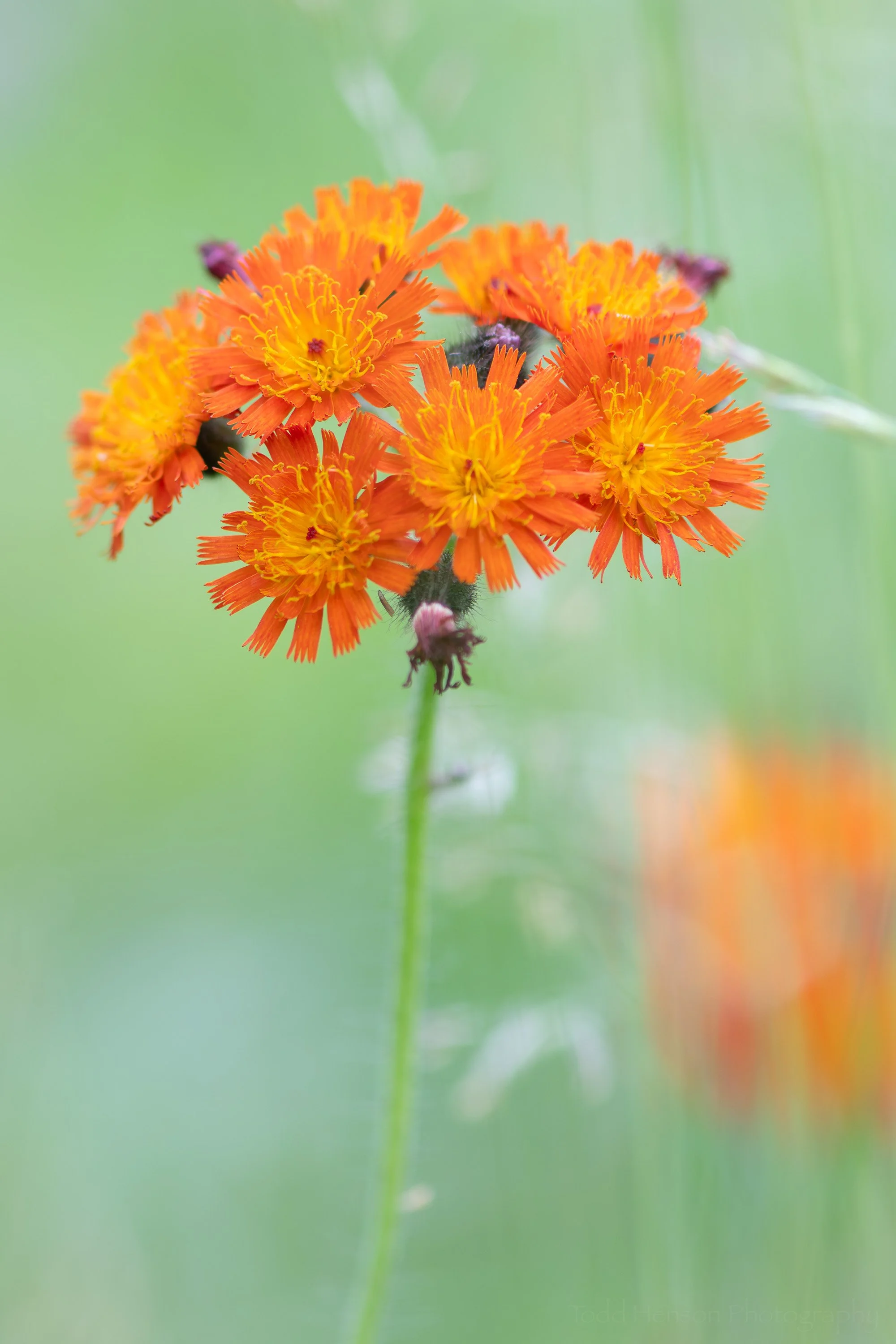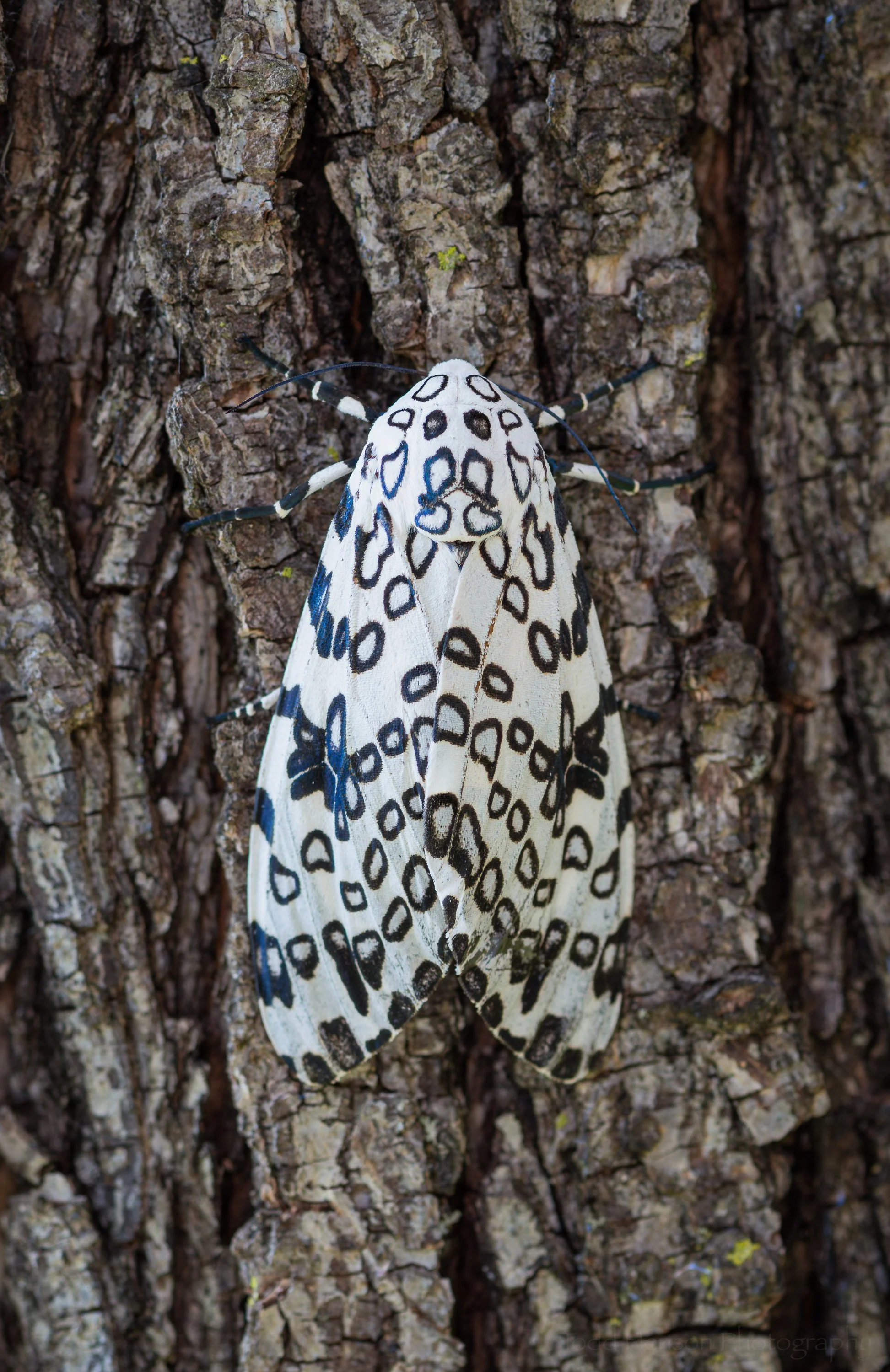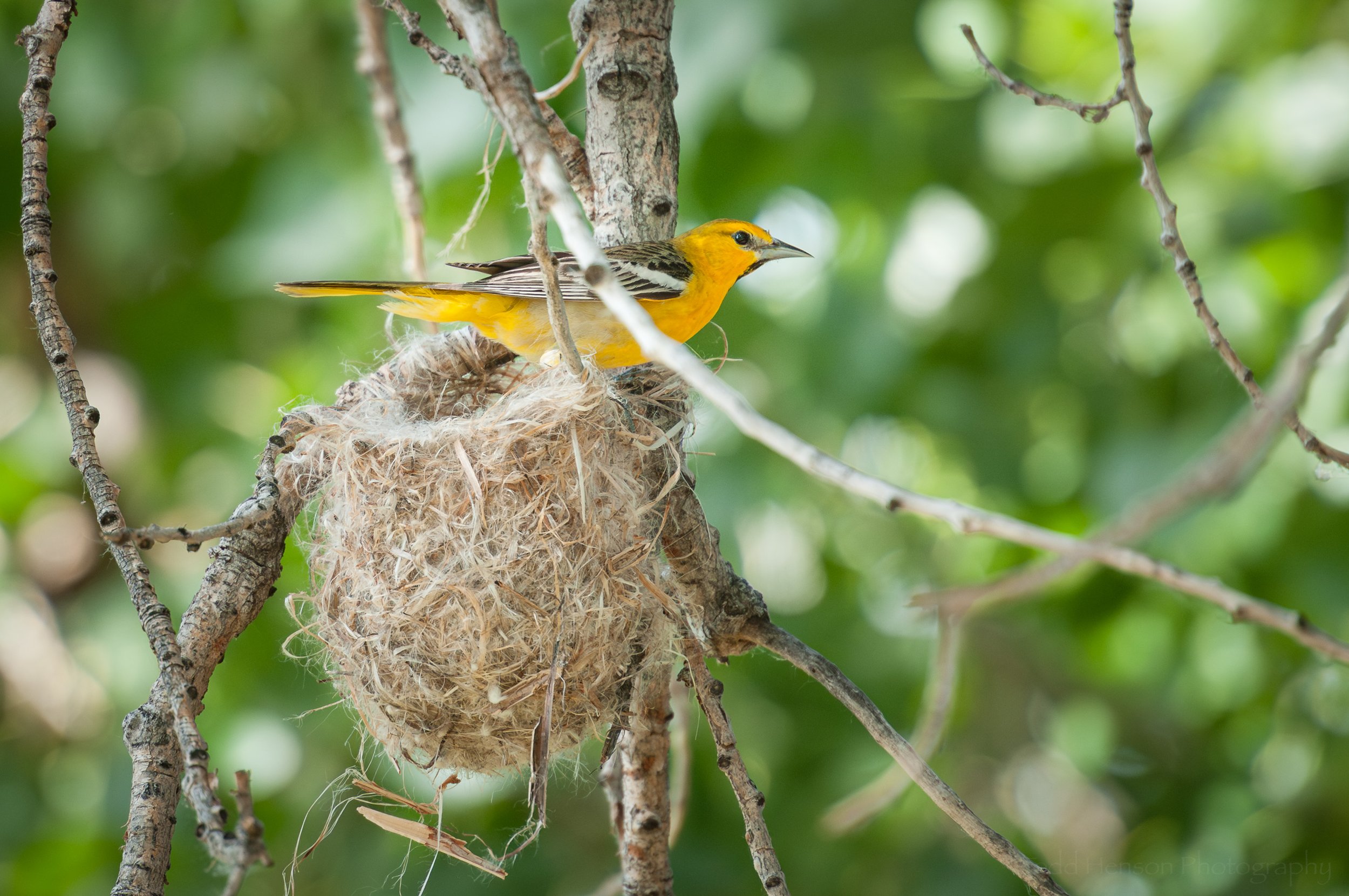Blue-Gray Gnatcatchers feeding their young nestlings. You can see the feet of the other parent hanging on a small branch to the right of the larger branch.
One of the many joys of avian photography is observing and photographing nesting behavior. You need to be careful, of course, to avoid causing any problems for the birds. You don’t want to stress them, scare them away, damage the nest or surroundings, or attract a predator to their nest. And that makes finding a nest you can safely observe for brief periods of time a very special thing, indeed.
One year in mid-June I found a small Blue-gray Gnatcatcher nest in a tree just off the trail. It wasn’t so low that I could look down into the nest, but it was low enough to see the little chicks heads as the adults fed them. I only spent a short period of time at the nest, perhaps 10 minutes, as I didn’t want to attract attention to it, either of predators or other people who might then attract even more attention. These things can sometimes get out of hand. I enjoy sharing, but in these cases I’ve learned to stay quiet to try to protect the well-being of the birds.
I was fortunate in this short time to observe both adults busily feeding the chicks. When they left the nest the chicks would quiet down and lower themselves. But when an adult returned the chicks started making noises to attract the attention of the adult, yelling, “Feed me, feed me!” In one photo you can see an adult holding a captured spider while the other adult feeds one of the chicks.
Feed me! One of the Blue-Gray Gnatcatcher nestlings lifts it head and opens its mouth waiting for food from the incoming parent.
Both adult Blue-Gray Gnatcatchers at the nest, one holding a spider for the young nestlings.
Blue-Gray Gnatcatcher nests are interesting. They are covered with moss, lichen, and other small things held together and stuck to the tree with spider webbing or caterpillar silk. I’ve watched nests being built and it’s an amazing process. These little fearless birds are so industrious and so fast. It really is a beautiful thing.
I know some of you might not find this next part as interesting, but I was fascinated to observe the removal of a fecal sac from the nest. These are closed nests. And all animals that eat must purge themselves of waste. Well, how do these birds keep their nests clean with several young all eating and growing together? The young chicks expel their waste in a small fecal sac, which adults will remove from the nest. Nice and tidy. And for scientists and naturalists these fecal sacs are a wealth of information about the diet and health of the birds. I’m just a photographer and nature enthusiast, though, so I left the fecal sacs to the birds. 😀
You can just see the fecal sac at the lip of the nest, just below the adult.
The parent grabs the fecal sac. Unfortunately, I lost focus on the birds.
The parent lifts the fecal sac out of the nest, keeping it clean.
Do you enjoy these posts?
Sign up to receive periodic emails with updates and thoughts. Don’t worry, I won’t spam you. And please consider purchasing artwork or products from my online store, and using my affiliate links in the sidebar to the right when shopping online.
I appreciate your support!



























